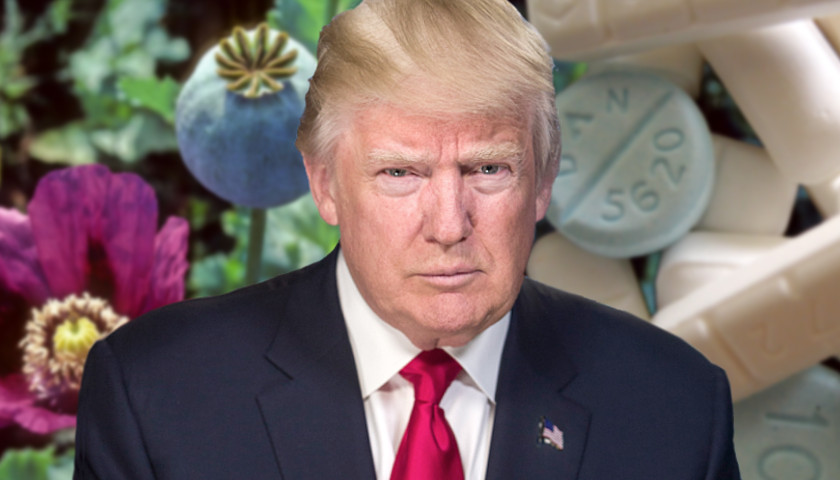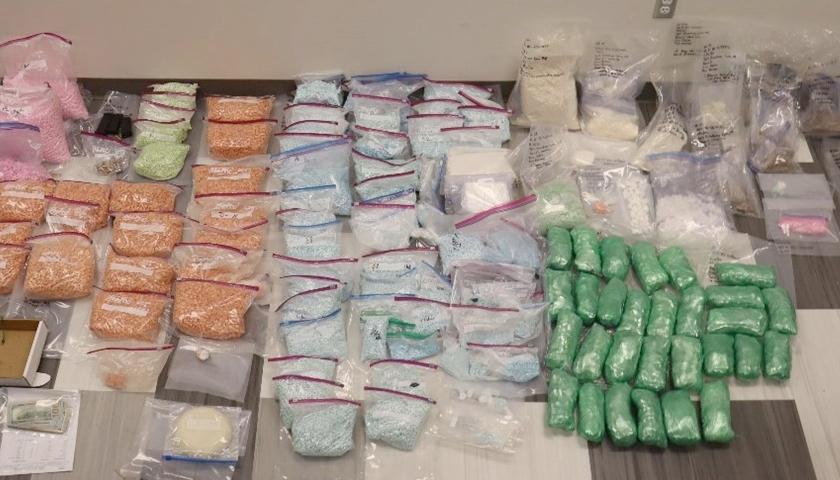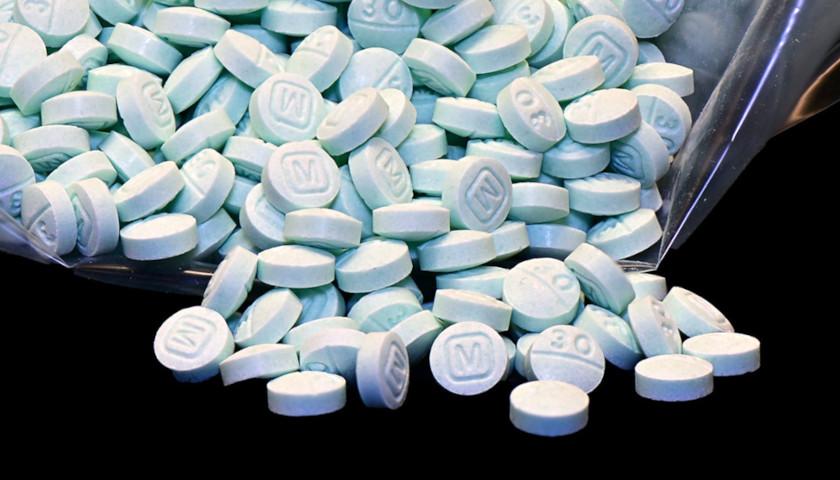by Jeffrey A. Rendall
Sometimes the solution to a crisis is so obvious that we feel foolish when failing to immediately recognize it.
And sometimes it’s not so plain. Such is the case for the opioid epidemic in America. For those in need of explanation, “opioid” means “naturally occurring opium-containing substance” – any opium-containing substance that is produced naturally in the brain. It can also mean “similar to opium” – similar in effect or properties to opium but not derived from opium.
A good many of us first learned about opioid dependency during the 2016 campaign when the issue was raised time and again with questions posed to candidates of both parties at virtually every stop – especially in New Hampshire. Drug addiction is hardly obscure but it’s not necessarily something you expect to concentrate on alongside tax proposals and foreign policy visions from stumping politicians.
Both Carly Fiorina and Ted Cruz relayed stories about losing someone close to them because of addiction so they spoke from the heart as well as experience when discussing the necessity to help those who need it the most — but how to do it?
The federal role in the so-called “War on drugs” has been a hot topic of debate in recent decades with libertarians like Sen. Rand Paul calling to deescalate (or end) it, liberals suggesting marijuana and other drugs should be legalized and readily available and many conservatives lodged at the other end of the spectrum, demanding efforts be stepped up to keep illegal substances out of schools and communities at all costs. Volumes of research gather dust in each camp’s corners and by all appearances we’re no closer to finding consensus on a permanent solution to the problem now than we ever were.
President Donald Trump introduced his administration’s plan to help with the opioid crisis last week, but the pragmatic president knows there’s no magic cure at hand.
The Editors of the Washington Examiner wrote, “Through federal funding, shifting enforcement priorities, and other policy changes, the Justice Department, local law enforcement and other first responders, the State Department, the National Institutes of Health, the Department of Defense, and the Department of Veterans Affairs will make efforts both to enforce drug laws better, and to support and treat addicts and would-be addicts better.
“None of these policies will solve the problem. Some of them may not help at all. But the conservative worldview sees catastrophes like the opioid epidemic as maladies to be minimized rather than problems to be solved. The conservative sees government policies as nudges that can help while acknowledging that we don’t know the consequences of our actions.”
Well put. Trying to pin down a problem such as opioid addiction is like working to prevent flood water from breaching a hastily constructed sandbag wall; as soon as one leak springs another is not far behind and you’re never quite sure where the weakest points are. Drug dependency appears similar – not only is there no guarantee a treated addict will remain clean there’s invariably another person out there in bad shape who hasn’t yet revealed him or herself to authorities.
On the surface throwing money at the problem seems to be the prudent thing to do – funds for greater enforcement, incarceration for dealers (including crooked prescription-hawking doctors and medical personnel), grants for new treatment centers and research into medicinal alternatives to the really harmful and addicting stuff.
But this also runs into the same type of federalism quandaries as any other big government national program such as education or gulp, health insurance. Isn’t drug addiction a local problem in the same vein as poor public school systems or corrupted law enforcement? Or can we devise a solution in a Washington boardroom and wave the federal magic wand where everything instantly improves?
Further, every dollar invested in the opioid problem takes away from urgently needed research into other more pervasive health predicaments such as cancer or heart disease; and what about the preventable (to some extent) maladies such as diabetes? Then there’re the wicked social consequences stemming from already legal products such as tobacco and alcohol. Cracking down on smoking has served to lessen the problems associated with it but the hundreds of millions dumped into prevention programs and public service ads have still failed to convince a lot of people to stop buying cigarettes.
If you don’t believe it just glance at how many people are smoking outside of bowling alleys and restaurants in your city at any one time. Do these people not know smoking is bad for you?
Of course they do. And judging by the number of beer commercials during sports telecasts people are still imbibing at a “healthy” rate too. Public campaigns to combat drunken driving and alcohol abuse have resulted in fewer arrests and alcoholics on the street, but the troubles still persist.
The answer, to the extent that there is one, may be to work a lot harder on the culture.
David French wrote at National Review, “Of course addiction can strike anyone, but the data are overwhelming. Not every category of American is equally vulnerable. Though an intact family isn’t a foolproof shield against hopelessness, despair, and addiction, it’s still a shield. Do we want to combat the opioid crisis?
“If so, let’s start in the home. Let’s start with a mom and dad who love each other and stay together — through good times and bad. Let’s start with a culture that celebrates marriage and a community that encourages fidelity. Let’s treat addicts, yes, but let’s not forget that while there’s no way to inoculate any person against addiction, a life of faith, hope, and love is a good start.”
Conservatives have been arguing forever that the only real “solutions” to society’s ills is to return to the basics of our Judeo/Christian cultural foundations, those being religion, marriage and the family. The Bible is a thousand plus-page treatise on moral teachings; marriage between one man and one woman is the bedrock of society; and a two-parent home has been proven through study after study to provide the healthiest environment for children to grow up and then lead responsible lives.
The recent revelations concerning sleazebag producer Harvey Weinstein didn’t expose anything about liberal culture people didn’t already know. Just go to the movies or turn on the TV and you’ll see plenty of sex and violence. The glorification of drugs in media isn’t quite what it used to be but Nancy Reagan’s simple credo of “Just say no” isn’t getting a lot of acceptance there either.
There are other ways the media is making the situation worse as well.
Adding skepticism to the “crisis” at hand is the fact the media promotes this opioid epidemic as though it’s the health scare du jour. In the past the public has been whipped into a panic over bird flu, swine flu, Ebola outbreaks in Africa and more recently fears of contracting the mosquito-borne Zika virus.
Depending on whether there’s a convenient outbreak at hand the media sometimes delves into the human-fostered social diseases of homelessness and illegal prostitution as well as sex slavery and human trafficking.
That’s not to lessen the potential severity of any of these threats but whenever the media makes a big deal out of something chances are the fright is much worse than the danger to any particular individual. What does someone contracting Ebola in the Tri-State area have to do with my chances of getting it in Virginia?
This is also not making light of the opioid crisis either. I haven’t witnessed it first-hand but I’ve read enough accounts and seen reputable news specials on the subject to know the epidemic is real – particularly in places that suffered economically under decades of neglect by the politicians in state capitals and Washington.
In addition to more emphasis on traditional culture another way to help these communities is to increase their opportunities for economic advancement. Liberals lampoon tax cuts as a means to better the lives of the lower-tier but every business owner that decides to hire more employees or keeps from laying-off others is helping someone along the line.
The greater culture can help, too, including the entertainment industry.
Roger L. Simon wrote about the new film “Let There Be Light” at PJ Media, “Actually, the right approach is NOT to go through Hollywood, but to build a system of our own. Listening to Sean [Hannity] on The Mark Levin Show Friday, I suspect he gets this. He was proud they made and are distributing this film outside the system. That is the way to do it.
“Let There Be Light is a promising beginning, maybe more than that. It deserves our support. Yes, Hollywood occasionally serves our audience (Lone Survivor and The Blind Side are two examples), but why not do it ourselves? Go spend your money on this movie and the Hannity-Sorbo team will make another and they will spawn others and….
“Remember, as the late Andrew B. [Breitbart] said, ‘Politics is downstream of culture.’”
For the multitudes of people – liberals and #NeverTrumpers alike – who endlessly complain about the deteriorating nature of the political rhetoric in recent times, maybe they’d be better off examining the reasons why someone with an interesting personal past like Donald Trump was allowed to assume power.
Could it be because morally-challenged human rubbish like Bill Clinton was placed on altars and worshipped as heroes?
Think about it. The American opioid crisis isn’t going to be solved in doctor’s offices, treatment centers or by politicians in Washington. All of these things will help treat the symptoms, but the real “cure” lies within the minds of the people impacted and the culture that’s working overtime to debase them.
Reprinted with permission from ConservativeHQ.com.









Finally, someone speaks the truth.